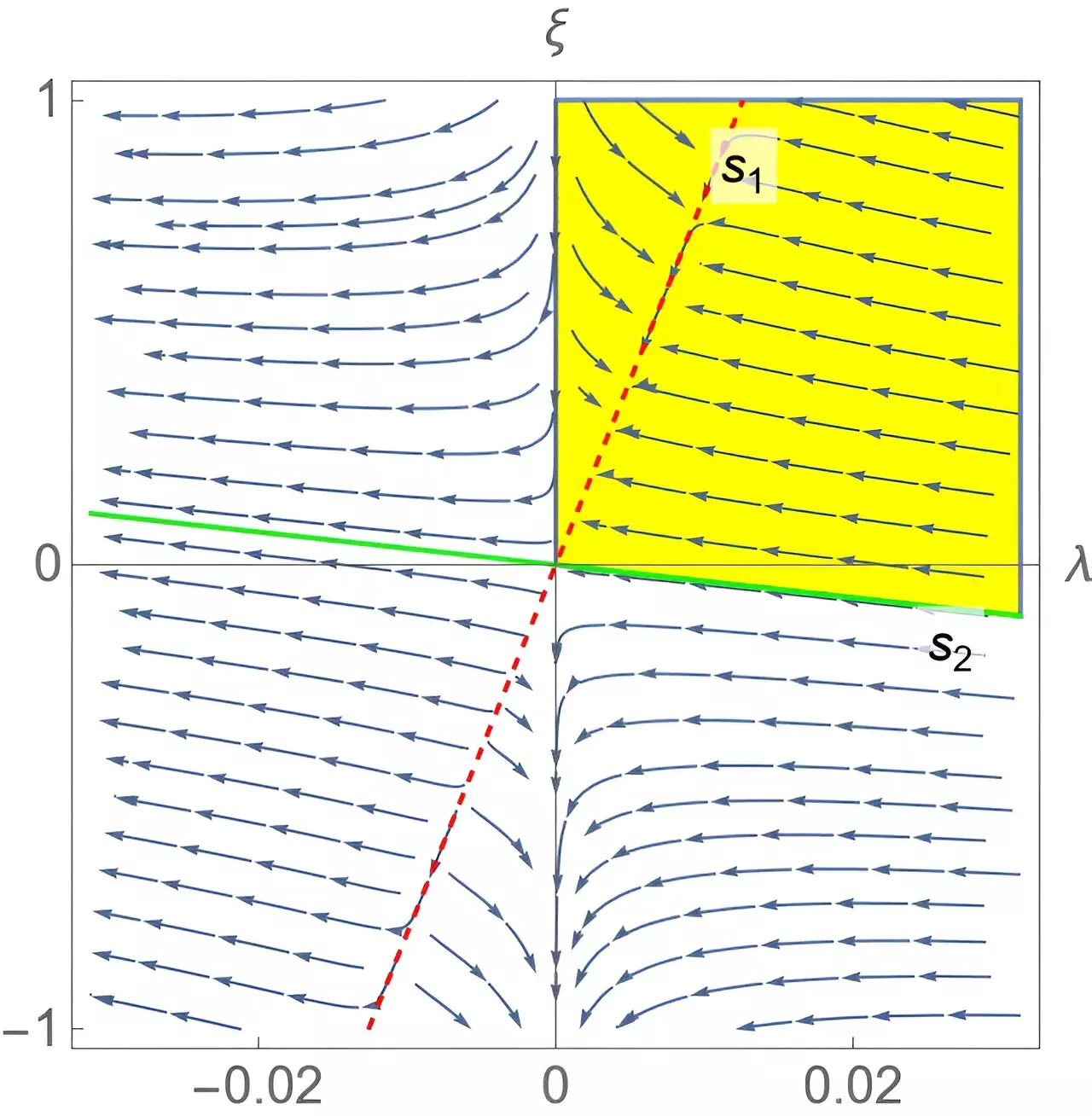In the ever-evolving landscape of theoretical physics, the quest to comprehend gravity on a quantum level has remained a formidable challenge. Recent research led by a collaboration of scientists from the International School for Advanced Studies in Trieste, the University of Massachusetts, and the Instituto de Física Teórica at Universidade Estadual Paulista in Brazil promises to advance our understanding of gravitational interactions significantly. Their innovative study, published in *Physical Review Letters*, introduces a novel approach to calculating the beta functions of couplings in quadratic gravity, a theoretical framework that extends Einstein’s general relativity.
This groundbreaking work, according to co-author John Donoghue, aims to establish a coherent description of gravitational phenomena—one that could lead to a unified theory capable of addressing both classical and quantum realms. The research team’s endeavors are particularly timely, as they delve into the complex landscape of quantum field theories (QFTs) in search of stable, consistent models of gravity that adhere to the principles of renormalizability.
Understanding the Framework of Quadratic Gravity
At its core, quadratic gravity emerges as a compelling extension of general relativity, incorporating local curvature terms to the Einstein-Hilbert action. By doing so, it offers a framework that can potentially accommodate high-energy gravitational interactions, thereby tackling some of the limitations existing within traditional models. The inclusion of quadratic terms is not merely a mathematical alteration; it provides a fertile ground for new insights into quantum behaviors of gravity that could transform our understanding of the universe.
Contrary to its predecessors, quadratic gravity allows for a richer interaction space, one where certain coupling constants may behave unexpectedly. Donoghue highlights that previous research in simpler theories has been foundational, setting up a backdrop for this groundbreaking study.
The Significance of the Beta Function
One of the pivotal components of this research is the beta function, a mathematical representation that encapsulates how coupling constants evolve as energy scales alter. In the context of quantum gravity, understanding this ‘flow’ of coupling constants is not just a technicality; it is crucial for simplifying complex interactions into more manageable forms. Co-author Gabriel Menezes points out that a precise calculation of the beta function provides vital clues about the high-energy behavior of quadratic gravity theory.
Highlighting the implications of this research, Donoghue notes that stability at high energies is paramount. The researchers’ findings suggest that coupling constants in their proposed model may trend towards vanishingly small values, indicating a phenomenon known as asymptotic freedom. This allows for the possibility of stable interactions that do not lead to problematic divergences or the formation of unstable particles—an encouraging prospect for physicists striving to forge a complete theory of quantum gravity.
Redefining the Landscape of Gravitational Theories
The implications of this groundbreaking research extend beyond quadratic gravity itself. By introducing new techniques to track the behavior of coupling constants, Donoghue, Menezes, and their collaborators are laying down a foundation that other physicists can build upon. Their results open pathways for further exploration in the intricate web of quantum field theories, suggesting that quadratic gravity could be a key player in our ultimate understanding of gravity.
Moreover, the innovative methodologies introduced in their study may spawn new approaches to analyzing other gravitational phenomena, emphasizing the interconnectedness of various theoretical frameworks. As the researchers continue to explore the high-energy behaviors and scattering amplitudes associated with quadratic gravity, they foster a growing body of knowledge that could redefine existing paradigms in theoretical physics.
A Vision for the Future of Quantum Gravity
The necessity for a nuanced understanding of gravitational interactions cannot be overstated. With various competing theories in the realm of quantum gravity, the arrival of robust mathematical models such as those proposed by Donoghue and his team may supply the clarity needed to navigate this convoluted territory.
By illuminating paths toward stability and consistency in the behavior of gravitational couplings, the team’s research signifies a giant leap in evolving our comprehension of the universe’s fundamental forces. This endeavor invites physicists to rethink existing models and equips them with the tools necessary to probe deeper into the mysteries of quantum gravity, paving the way for groundbreaking discoveries in the years ahead.
As the research community eagerly anticipates the implications of these findings, one thing is clear: the journey toward a complete understanding of gravity is not just an academic pursuit; it represents humanity’s relentless quest to unravel the very fabric of reality.


Leave a Reply